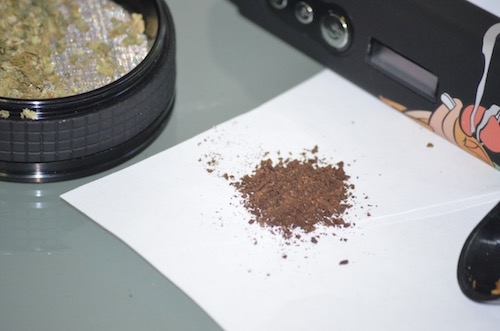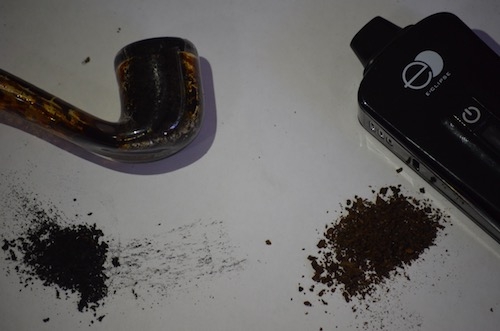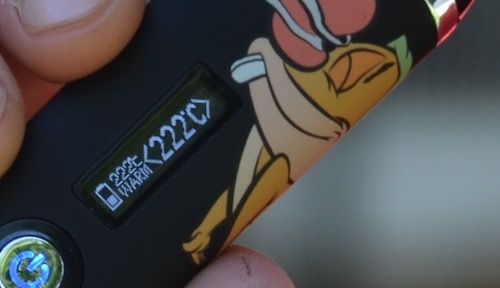What Happens to Dry Herbs during Vaporization
Read this post to understand what happens in a dry herb vaporizer. We discuss how the vape breaks down the herbs and compare vaping to smoking with tips and other great information.
Vaping Dry Herbs Introduction
Vaporizers are a relatively new addition to the dry herb connoisseur’s toolkit. Before vapes, there were plenty of ways to enjoy dry herbs. The on-the-go and social smoker might prefer rolling. Often the average smoker might use a smoking pipe. The true everyday dry herb aficionado will undoubtedly have a bong, along with the former two. While these are all great ways to enjoy dry herbs, all three have an unfortunate downside - they burn the herbs. Even if you’re consuming healthier herbs, the process of burning (combustion) produces toxins that aren’t great for your lungs.
That’s why vaporizers are so great. Not only are they convenient and discreet, but many of them heat dry herbs at a lower temperature, releasing vapor full of taste and aroma, without the dangerous byproducts produced during combustion.
Quick Breakdown – What happens step-by-step
- Herbs are placed in the heating chamber
- Electricity heats quartz or ceramic elements within the heating chamber
- The heating chamber starts to heat up, heating the air in the chamber
- The hot air is pushed or pulled through the chamber, heating the herbs ground up from a herb grinder but not burning them
- The hot air vaporizes key compounds in your herbs, releasing flavor and aroma.
- This continues until all the herbal compounds containing flavor and aroma are gone, and you’re left with basic plant matter.

The Vaporizer Heating Process
Any device made for consuming dry herbs will use either combustion or convection. Combustion is the traditional process and involves burning the herbs to release key components of flavor and aroma. Combustion occurs at high temperatures, typically anywhere above 455°F. ‘Burning’ that occurs during combustion produces many byproducts. Two of the byproducts, carbon monoxide and tar, are harmful to our health. While some vape pens use combustion, a true vaporizer uses convection to bake the herbs. This happens at temperatures under the combustion point of 455°F. Vaporizing at lower temperatures extracts the beneficial compounds from the dry herbs by moving hot air through them. This vaporization process does this without releasing dangerous toxins.
Vaporizers can be set to a range of temperatures and anything under the burning (or combustion) point of your dry herbs will result in vapor rather than smoke. While burning points vary for different herbs, ideal temperatures for vaporizing herbs ranges from 375°F to 430°F. Some dry herb vaporizers have a few settings while others can be adjusted to the degree. When using a new vaporizer, it’s always a good idea to start vaporizing at a lower temperature and increase it until you find the perfect vapor. As the temperature increases, the vapor will get thicker but will eventually get harsh and almost smokey. It’s best to find the point where the vaporizer produces a thick vapor, but it’s still tasty and smooth. Of course, the ideal vapor is slightly different for everyone.
The Breakdown of the herbs
The biggest difference between smoking and vaping dry herbs is the speed and efficiency in which they break down. Each herb type and variety will have different percentages of key compounds. Most of us want to consume the highest percentage of these key compounds and enjoy the best possible flavor and aroma that they provide. When burning herbs in a pipe or bong, the process is quick. Depending on the bowl size, herbs could be fully burnt in a matter of seconds. Often herbs are burned off because they are still smoking after you’ve taken a hit. That, or you’ve roasted the outside and left some goodness inside. More often than not, you end up tossing this otherwise good herb. In addition to burning all the beneficial compounds, you also end up inhaling a lot of plant matter.
However, vaping is totally different. Passing hot air over ground herbs slowly breaks them down, releasing key compounds containing flavor and aroma as vapor. Each pull breaks down the herbs more by separating individual molecules. After quite a few hits, the herbs get browner and lose flavor little by little. In the end, you are left with mostly plant matter that is void of color, flavor and aroma. Since vaping doesn’t require combustion, there isn’t any tar or carbon monoxide (the two most harmful byproducts of smoke) in the resulting vapor.
Tips for vaporizing herbs – a numbered breakdown
- Grind herbs to a fine, light consistency for airflow throughout herb and maximum surface area
- Pack it lightly so that the herb ‘sticks’ to itself but not too tight to where it’s restricting airflow
- Use a rubber extension sleeve if your mouthpiece gets hot
- Always start at a low temperature setting and work your way up to find an ideal temperature - it should be a thin vapor, but taste flavorful and smooth
- Change your herbs when they have lost their color and flavor.
- Clean or change a screen in the mouthpiece if it becomes difficult to take a pull from the vape
- Follow cleaning and maintenance instructions for each vape to keep it running longer
- Charge your pen - but never overnight as this could cause damage
- Change out the coils if your vape isn’t producing like it used to
- Never overtighten connection points - this could damage threads and ruin your pen

Vaping vs Smoking
We’ve discussed some of the benefits of vaping but there’s gotta be a reason people still like smoking, right?
Pros and Cons of Smoking
Pros
- Some smokers love the unique flavor and aroma produced from smoking dry herbs
- You get thick, heavy hits from smoking
- Smoking is stronger and has an almost instant effect
- You never have to worry about charging a vape pen battery
Cons
- Smoking is less healthy than vaping
- Your herbs don’t last as long
- Herbs can burn off or be lost inside charred herb
- There is less flavor and aroma of the best herbal compounds
- Herbs break down faster and you don’t end up consuming all the best compounds
Pros and Cons of Vaping
Pros
- Vaping is way healthier - no combustion means no tar or carbon monoxide entering your lungs
- Regardless of toxins, it’s healthier to inhale lower temperature air
- Vaping releases pure herbal taste and aroma
- The herbs break down slower, releasing key compounds throughout a vape sesh
- Herbs last longer when vaping
- Vaping is better for those around you: second-hand smoke is a big concern these days and many of those opposed to smoking in public settings won’t be as bothered by vapor as it dissipates almost instantaneously
Cons
- Vapor isn’t smoke and might not satisfy those true ‘smokers’
- Vaporizers need to be charged
- You need to grind your herbs

Best Temperature for Vaping dry herbs
All dry herb vaporizers come with some type of temperature control. This may be just a few settings or it might be adjustable to the exact degree with a digital display. While some people prefer a thicker, heavier vapor, others are looking for a smooth, flavorful hit. However, we recommend setting your vaporizer somewhere between 375°F and 430°F. Between 375°F and 400°F will create a flavorful vapor and should vaporize most key compounds in your dry herbs. However, there may be some left even after most of the flavor and aroma is gone. As the heat increases, a higher percentage of important compounds will be released into the vapor. This only happens to a point: eventually the vapor will become harsh and lose the smooth flavor. Most herbs will begin to burn around 455°F so it’s best to stay significantly lower than this. That’s why we don’t recommend setting a dry herb vaporizer over 430°F.
Remember, if you just bought a new vaporizer and aren’t familiar with it’s heat settings yet, it’s best to start at the lowest heat setting and work your way up. Sometimes the actual temperature in the chamber will vary slightly from the set temp. That’s why it’s a good idea to start low with a new vape. Once you’ve gotten familiar with a pen, you’ll know exactly how to dial it in. Read our blog post with instructions on how to use a vape for more information on this topic.
While we all have slightly different preferences, if you’re new to vaping, you might not know where to start. If this is the case, start at a low setting and take a few pulls. If your vapor is thin and tasteless, your vape isn’t hot enough. Keep adjusting it until you are exhaling visible clouds that hang around for at least 5-10 seconds before dissipating. If you start getting harsh hits that lack flavor and make you cough, the vape is too hot and you should turn it down. It may be hard to fine-tune at first, but once you find that perfect setting, it’ll be worth it.
Related Blog Posts
Are Vapes Superior To One Hitters
Blog Categories
- Home
- Industry News
- Vaporizer Reviews
- Dry Herb Vape Tutorials & FAQ
- Wax Pen Vape Tutorials & FAQ
- Oil Vape Pen Tutorials & FAQ
- Vaping Guides & Information
- Dabbing FAQ & Guides
- Smoking Pipe Tutorials
- NY Vape Shop Listicles
- Vape Pen Comparisons
- Vape Shop How To Articles
- Vape Shop Buyers Guide
- Vape Pen Basics
- Herb Grinder Reviews
- Dry Herb Vaporizer Reviews
- Oil Vape Pen Reviews
- Wax Pen Reviews
- Box Mod Vape Reviews